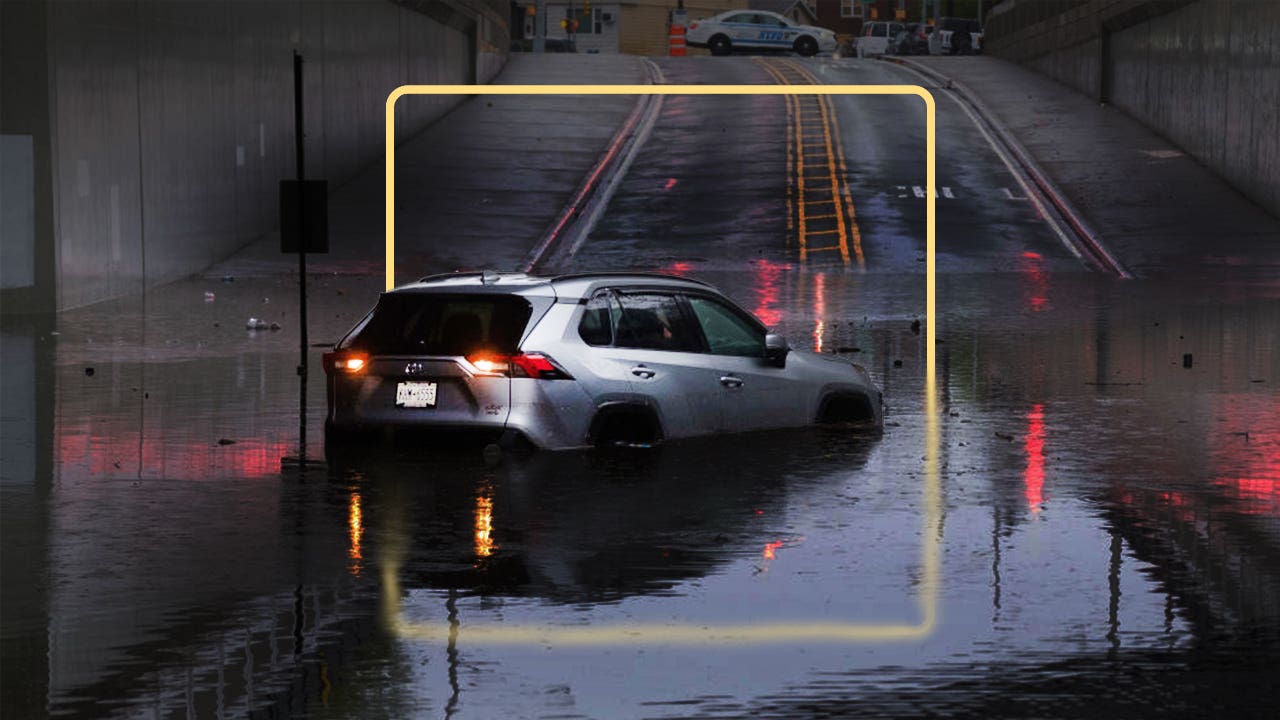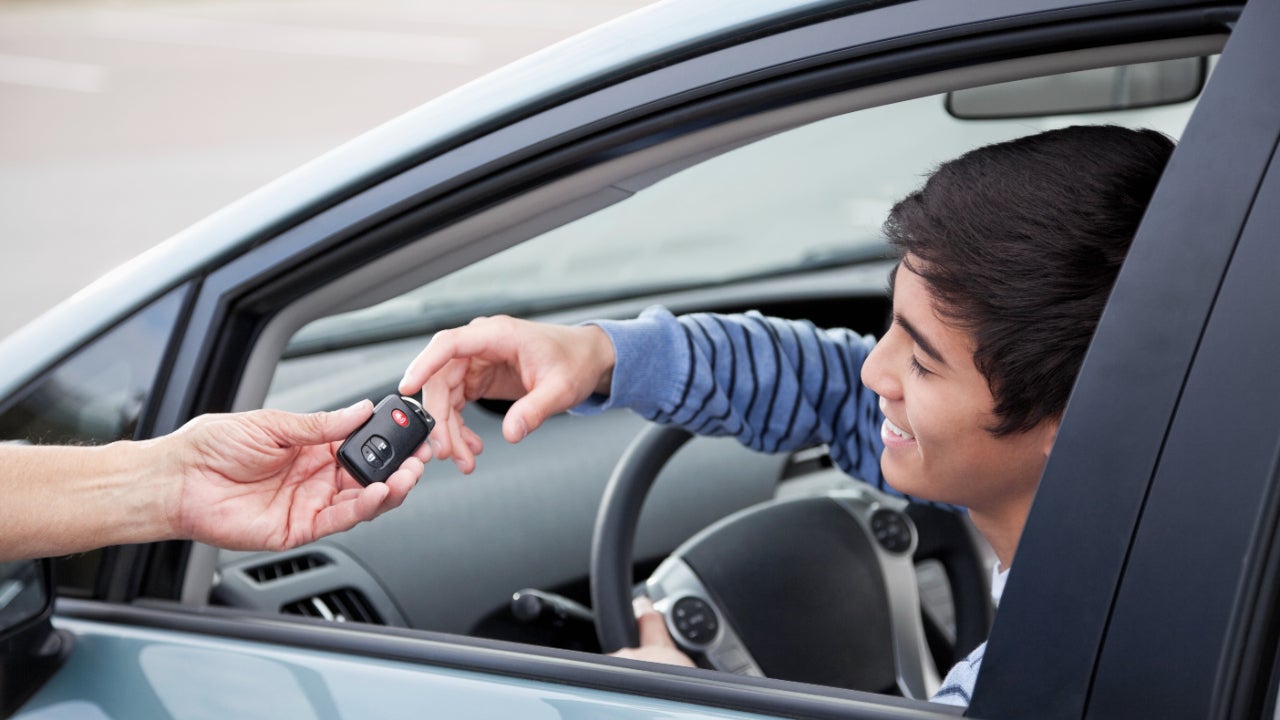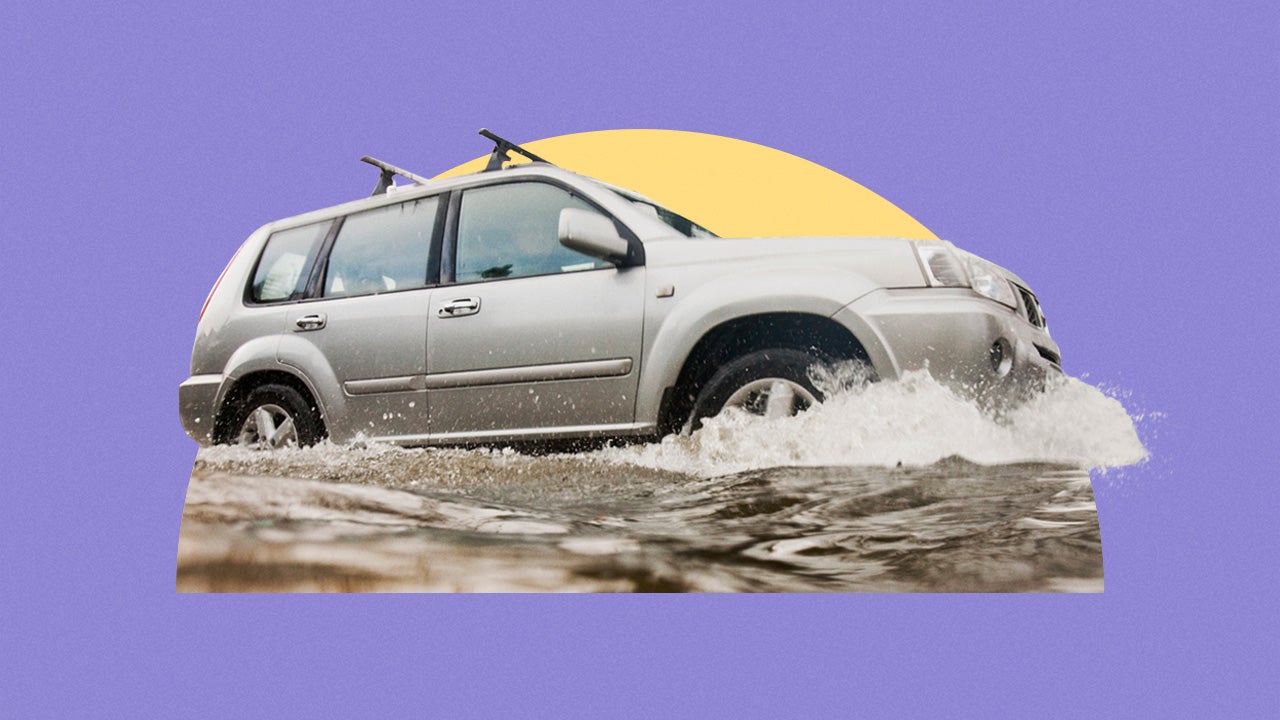How to avoid common problems with flooded cars: 4 tips

Key takeaways
- Flood damage — and other water damage — can have a lasting impact on the mechanical and electrical systems of any vehicle.
- A vehicle history report is a crucial component of a used car purchase because it shows previous problems and discrepancies in ownership.
- If the flood damage wasn’t reported to an insurance company, the vehicle may not have a salvage title.
- Hire a professional mechanic to inspect the car for any undisclosed water damage.
Car buyers throughout the nation can experience the aftereffects of destructive floods by unknowingly purchasing water-damaged cars. New and used vehicles damaged by significant flood events, like Hurricanes Helene and Milton, can find their way onto the market. Carfax data estimates as many as 347,000 vehicles may have been damaged during the 2024 hurricane season. This is in addition to the estimated 358,000 vehicles that were damaged in 2022’s Hurricane Ian. With so many water-damaged cars out there, it is more critical than ever to know how to avoid flood damaged cars.
When flood-impacted cars are resold, unsuspecting buyers often face expensive mechanical and electrical problems that surface months later. Even if you do not live in a region where flooding is common, Carfax research also shows that water-damaged vehicles appear in every state, meaning buyers from coast to coast are at risk of purchasing a flood damaged car. Because of this, you should always get a vehicle history report and an inspection when you buy a used vehicle.
Common problems with flooded cars
Water-damaged cars can be hard to spot. They often look fine and may even run well. Eventually, however, you are likely to face problems. Flooded cars break down from the inside out, though there are some signs that a car may have water damage:
- Musty odor: The interior of water-damaged cars will often smell musty. Unscrupulous sellers may try to hide the scent with powerful air fresheners, but it can be very difficult to truly rid a car of a mold or mildew scent. Test how a car smells by sitting inside with the windows closed.
- Moist or damp carpeting: Water damage can collect in places you don’t immediately see, like underneath carpeting. Feel the carpets throughout the car and pat them to locate moisture buildup. Check the trunk as well, including removing the spare tire to check for water or rust beneath it.
- Stained or mismatched upholstery and carpeting: Yet another sign of water damage is a car with loose or stained upholstery and carpeting. Look for blotchy, brown stains and compare floor carpeting to the upholstery on the doors and the roof. They should all look to be of similar age and color. Recently replaced upholstery may also be a sign of previous water damage.
- Rust: A vehicle with water damage may have rust around the doors, inside the hood or under the dashboard. Screws, door hinges, trunk latches and door handles may also show signs of rusting.
- Brittle wires: Check under the dashboard if you suspect a car may have water damage. Brittle wires can indicate that the vehicle has been impacted by a water event of some type.
- Fog or moisture beads: If a vehicle’s interior lights, instrument panel or exterior lights look foggy or have moisture beads inside them, consider it a warning sign that the vehicle may have water damage.
- Mud or silt buildup: During flood events, water can carry mud and dirt into a vehicle. Once the flood is gone, the dirt will remain. Some of the places to check for mud and silt include the glove compartment, trunk, under the dashboard and below the seats.
- Faulty electronics: Water damage will have lasting impacts on the electric system of any vehicle. Interior and exterior lights, wipers and turn signals should be tested. In addition, confirm that the audio system or infotainment system all function properly.
- Discolored engine oil: The oil in a car that has been impacted by flooding will be a different color than standard oil and will typically look murkier. If a car has been sitting for a long period of time, turning the engine on will mix the oil and water together, making the presence of water more apparent.
How to avoid flood-damaged cars
Because auto loans are secured loans, you may struggle to find a lender that is willing to finance a vehicle with a salvage or flood title. If you suspect that a vehicle may have water or flood damage, thoroughly research its history and request a pre-purchase inspection from a trusted mechanic. A pre-purchase inspection is key to getting the best auto loan rate, but it is even more important when you are checking for water or flood damage.
1. Run a vehicle history report
Running a vehicle history report can help uncover issues with a car before you make a purchase. Most states will either issue a flood or salvage title to a vehicle that was declared totaled. These are permanent title marks for vehicles that have been badly damaged by floods. Depending on the state, a salvage title may also be indicated by a numeric code.
Carfax and AutoCheck offer flood check tools that allow users to conduct a free check on the history of a car based on its VIN. When reviewing a car’s history, keep your eye out for vehicles originating from areas that have been affected by flooding. The National Insurance Crime Bureau also provides free online VIN checks that allow consumers to find out whether a car has been declared salvaged.
Review a vehicle’s history report for any sign that the car has changed hands several times over a short period of time. Be particularly leery of a history that involves buyers in multiple states. This could be a sign of what is known as title washing, where unscrupulous sellers retitle a car repeatedly to hide its history.
You may want to opt for a certified pre-owned (CPO) vehicle. They are thoroughly inspected, sold directly by the manufacturer and come with their own warranty. That said, they tend to be more expensive than other used vehicles.
2. Check for signs of water damage
Cars that have been even partially submerged even partially in water often have telltale signs, but they may be subtle if the car has been cleaned up for resale. Pay attention to musty or moldy smells, including those coming from the climate control system. Note any stains in the car’s interior, engine compartment and trunk. Other signs of water damage include dirt, sand or mud in odd places and seat belts that sound gritty when they are pulled or retracted are also signs of water damage.
It is also important to test drive every vehicle. Check for compromised electrical systems and infotainment systems, which will act up if they have been impacted by water. If there are signs of engine smoke during your test drive, know that this is a major red flag, and you should walk away.
3. Be wary of cars that are priced below market value
According to Kelley Blue Book, used car inventory continues to be tight. The nationwide inventory of used cars available for purchase is down 5 percent compared to January 2024. At the same time, prices remain steady. The average used car sold for $25,565 in January — an increase from December, but down by 3.4 percent from the same time last year.
You can use independent vehicle pricing sites such as Edmunds and Autotrader to check the typical selling price for the car you are considering buying. A new or used car priced well below market value is a strong indicator that the seller is anxious to get rid of it. In the current sales environment, it may be a red flag that something is wrong.
Be careful when a car is being listed for a significant discount and ask why the car is being offered for much less than market value. If you want to avoid the risk of buying a flood car, opt for a new vehicle over a used one.
4. Get a professional inspection
It is always a good idea to hire a certified mechanic or automotive technician to look over a car before you buy it, but it is even more critical when dealing with a potentially water-damaged car.
A professional can help ease your mind, especially if the car you are considering has one or more common warning signs. Be sure that the inspection not only includes obvious signs of water damage but also a thorough test of all the electrical equipment. Problems with these systems can take months to surface on their own.
Inspections typically cost anywhere from $100 to $200, depending on your area. And while you will typically have to pay for a pre-purchase inspection yourself, it will be money well spent if it prevents you from buying a car that will not last.
What to do if you bought a water-damaged car
If you’ve purchased a vehicle that has water damage, all may not be lost. It is possible to repair the vehicle with an experienced mechanic. But remember, these are not do-it-yourself fixes. It will require a professional who has extensive knowledge of cars.
It’s also worth remembering that repairing a flood damaged vehicle will not be cheap, so determine whether the car is worth the investment, especially since flood damaged cars typically have no resale value.
Dealerships are required to disclose — either verbally or in writing — if a car has a salvage title. If not, it may be a case of auto loan fraud. You may be able to seek legal recourse but know that this can be a lengthy and expensive process. It may be best to speak with an attorney to sort out the specifics of your situation.
You typically cannot return a vehicle after purchasing it unless the dealer has a return policy or the seller clearly committed fraud.
Bottom line
Even if you don’t live in an area impacted by flooding, flood-damaged vehicles are sold and driven across the country. If you suspect a car may have been impacted by water damage, there are several steps to take. Requesting a vehicle history report, looking for telltale signs and having the car inspected by a professional are all important ways to avoid a car that has water damage.
You may also like

A graduate’s guide to buying a car

Does car insurance cover flooding damage?

What to do with a damaged car after a hurricane



